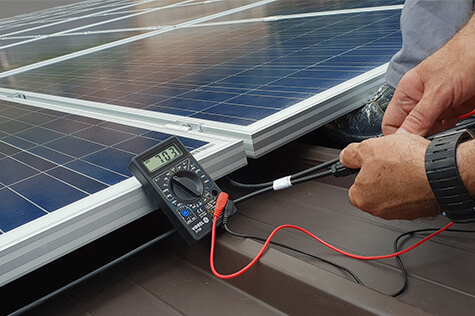High voltage insulation testing for solar panels is a procedure conducted to ensure the electrical insulation integrity and safety of the solar panel system. The purpose of this testing is to verify that the insulation materials and components within the solar panel assembly can withstand the voltages they may experience during normal operation, as well as under potential fault conditions. This testing is crucial to prevent electrical failures, enhance the reliability of the solar panel system, and ensure compliance with safety standards.
- Objective:
- The primary objective of high voltage insulation testing is to confirm that the insulation used in the solar panel system can withstand the electrical stresses it may encounter throughout its operational life. This includes voltages generated by the solar cells as well as those applied during installation, maintenance, or in the case of electrical faults.
- Components Tested:
- Various components of the solar panel system may undergo insulation testing, including cables, connectors, junction boxes, and other electrical components. The solar panels themselves may also be subject to testing to ensure the integrity of the encapsulation materials.
- Testing Standards:
- High voltage insulation testing for solar panels is typically performed in accordance with relevant industry standards and regulations. These standards may vary by region, and common standards include those established by organizations such as the International Electrotechnical Commission (IEC) and Underwriters Laboratories (UL).
- Test Voltage Levels:
- The test voltage levels applied during insulation testing are typically higher than the normal operating voltages of the system. This ensures that the insulation can withstand potential overvoltages and transient conditions. The specific voltage levels depend on the system’s design and the applicable standards.
- Test Methods:
- Various test methods may be employed, including dielectric strength testing, insulation resistance testing, and partial discharge testing. Dielectric strength testing involves applying a high voltage to the insulation and checking for any breakdown or failure. Insulation resistance testing measures the resistance between conductive elements and the insulation. Partial discharge testing identifies partial discharges or breakdowns within the insulation.
- Periodicity:
- High voltage insulation testing is often conducted at different stages of the solar panel’s lifecycle, including during the manufacturing process, after installation, and periodically during the system’s operation. Regular testing is essential to identify potential degradation or faults over time.
- Safety Considerations:
- Safety precautions are critical during high voltage insulation testing. Personnel conducting the tests should follow safety protocols, and appropriate personal protective equipment (PPE) should be used. Testing should be carried out by trained professionals to minimize the risk of electrical hazards.
High voltage insulation testing is an integral part of quality assurance and safety practices in the solar industry. It helps ensure the long-term reliability and performance of solar panel systems by identifying and addressing potential insulation issues that could lead to electrical failures or safety hazards.


